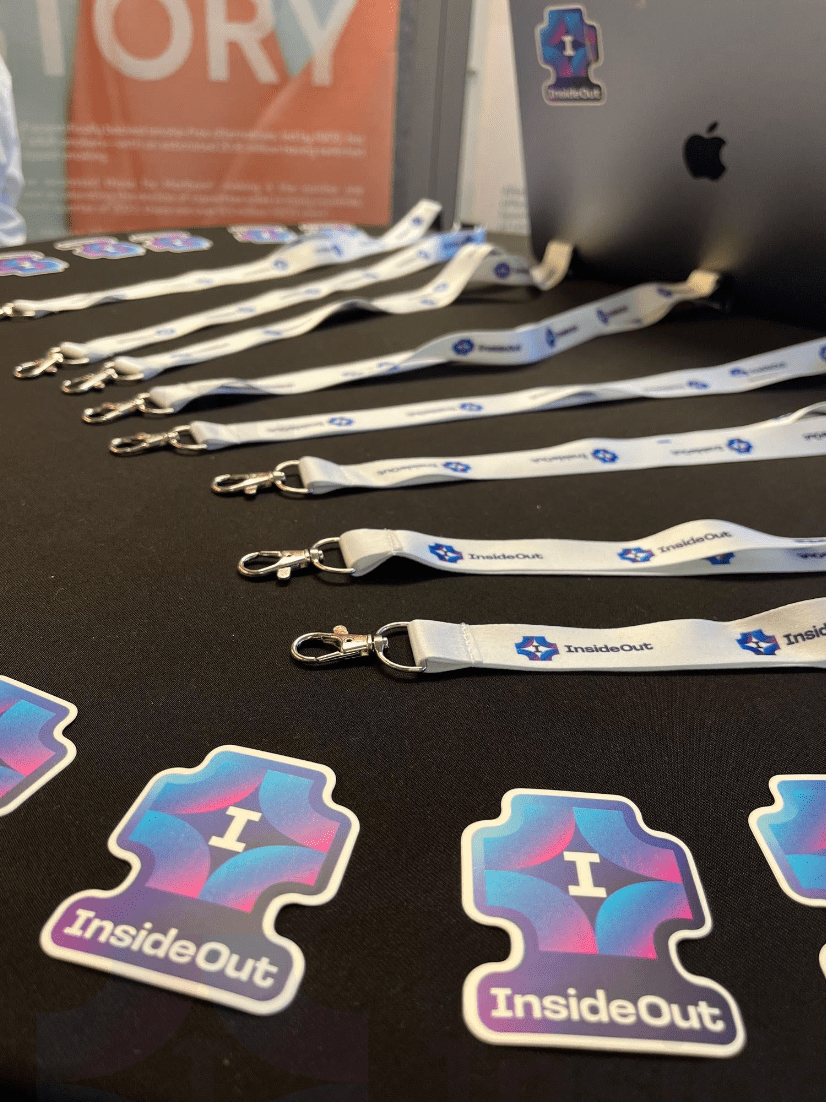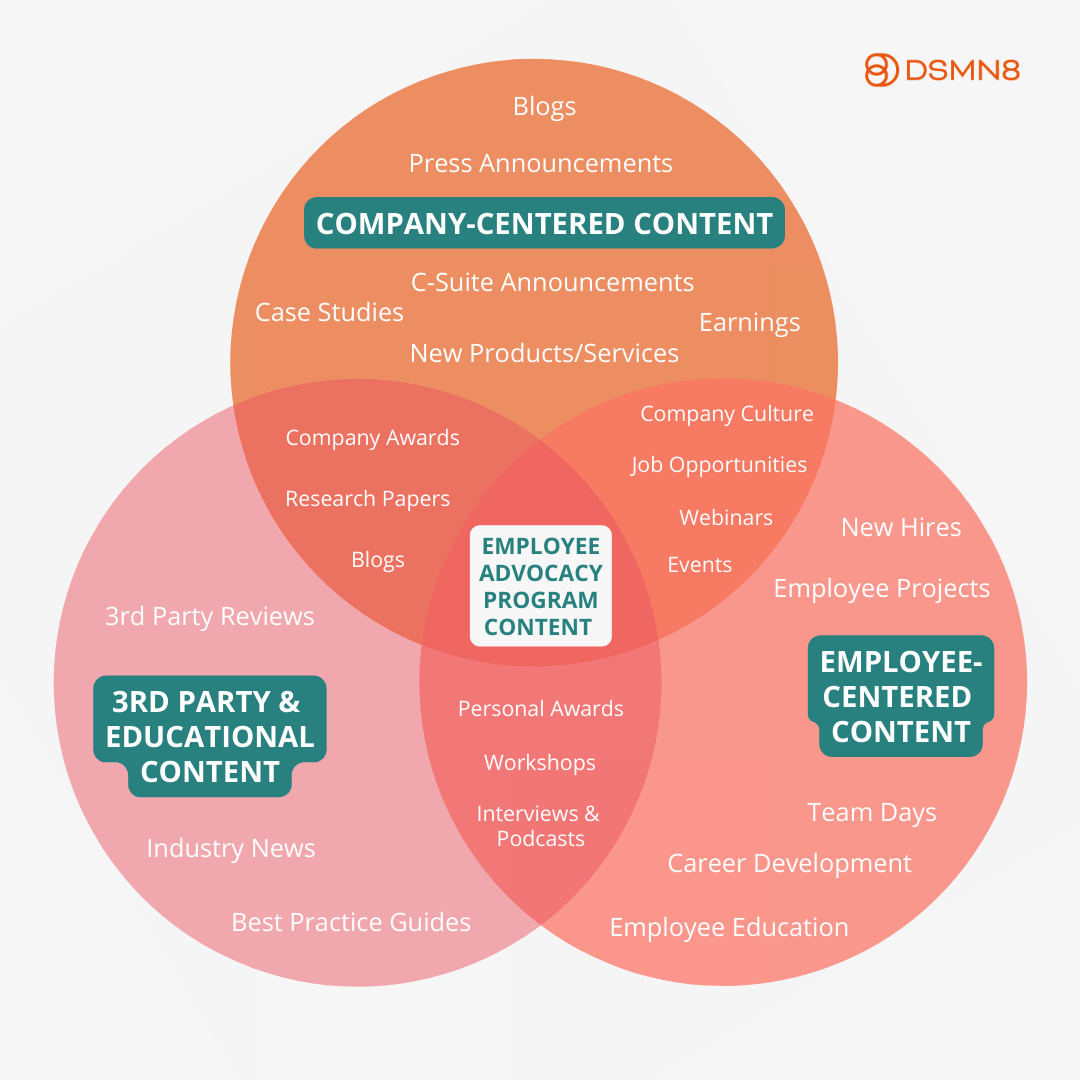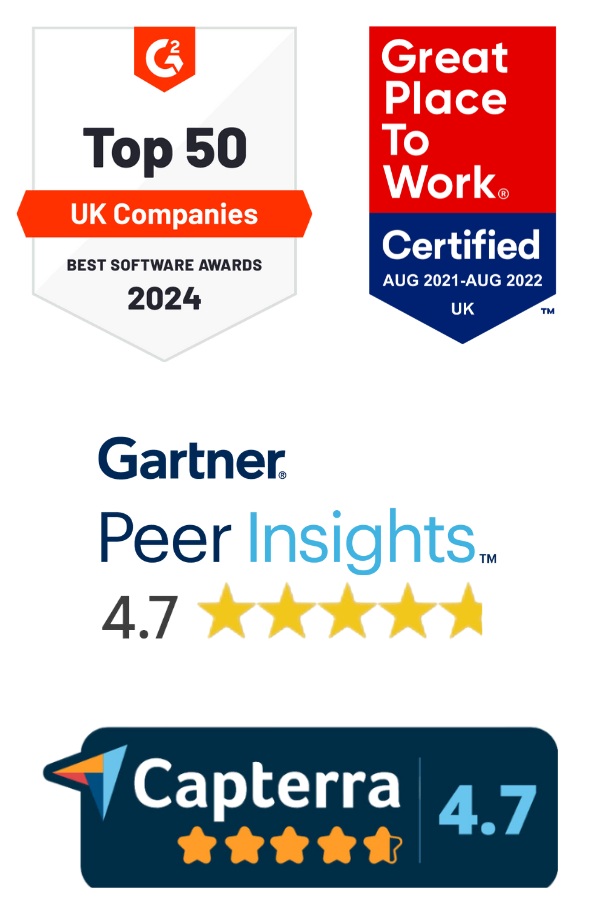
In 2025, an employee advocacy program isn’t just a marketing tactic. It’s one of the smartest ways to build trust in your company on social media.
As AI floods our feeds, people crave authentic voices more than ever. And often, those voices already work for you.
Recently, employee advocacy champion Sarah Ruzgar O’Connell joined Elliot Elsley and myself on the podcast.
She shared how AWIN’s program has evolved over the years and continues to drive results.
That conversation inspired this piece, alongside my own learnings from the past 6 years at DSMN8.
Here’s how to build a modern employee advocacy program that actually works in 2025, in 6 steps 👇
1. Create an identity for your program
If you want people to buy into your program, don’t treat it like another tool or software rollout.
Give it a name. A vibe. A purpose ✌️
Think of it as a community or movement within your company.
Create something that reflects your values, encourages connection, and makes people proud.
When advocacy feels like a natural extension of your culture, it sticks.

Philip Morris International is a great example of this. Program leader Verena created an exciting brand identity for their advocacy program.
The name ‘Inside Out’ reflects the purpose of their program – sharing internal news and culture externally). Creating a logo and merchandise was next level!
2. Ensure leadership are involved.
This can’t be a “marketing thing.”
For your advocacy program to gain traction, leadership has to walk the talk.
When execs actively share content, cheer on the team, and talk about advocacy in meetings, it signals that this isn’t a short-lived initiative.
It’s strategic, it’s supported, and it matters.
Sarah really drives this point home in her guest feature on the Employee Advocacy and Influence podcast.
AWIN was an early adopter of employee advocacy, launching its program with DSMN8 back in 2017.
Despite all the changes in social media since then, they continue to stay ahead of the game.
Sarah recommends encouraging employees to add their own unique perspectives to posts and providing localized content. She also attributes high engagement to leadership setting the example:
“When our CEO, Adam, posts about a certain topic when it’s really tailored, it just gets so much engagement and encourages conversation. So, we’ve been tapping into that.”
The podcast episode is well worth a listen:
3. Be adaptable to algorithm changes and content trends.
Algorithms change. New content formats pop up. What worked last year might flop this year.
That’s just how social works.
Stay curious and keep testing. Try short-form vertical video, carousels, or whatever’s trending on LinkedIn this month.
But don’t blindly follow every headline you read.
Look at your analytics and see what’s actually resonating with your audience.
Being agile doesn’t mean being reactive. It means staying informed and adapting with intention, always keeping your company values in mind.
4. Tailor your content to different departments and levels of seniority.
Here’s a common mistake I’ve seen from new employee advocacy programs: pushing the same content to everyone.
While it’s efficient, it doesn’t feel personal and simply doesn’t perform as well.
Different people want to talk about different things.
Your sales team might love sharing product news, while others are more into company culture or industry insights.
Some senior leaders will want to write their own takes; others might prefer having a post ready to go (use our CEO content framework to help here!)
Give everyone options. Make it easy. Let people choose the content and cadence that fits them.
Stuck for ideas? Use our content venn diagram, or what I like to call the ‘holy trinity’ of employee advocacy content:
You’ll also find this podcast episode helpful:
5. Make your program employee-focused.
It’s easy to forget this, but advocacy only works if your employees are actually into it.
That means:
-
Asking for feedback regularly (and listening to suggestions).
-
Giving people flexibility in how they participate.
-
Offering support and training for those who want help building their personal brand.
In my opinion, the key differentiator between a good program and a great one is originality ⭐️
Encourage authentic employee-generated content as much as you can within your brand guidelines.
With so much noise online, real stories and perspectives stand out more than ever.
6. Leverage modern technology.
Of course, I couldn’t write about creating a modern employee advocacy program without mentioning technology.
The right platform can make all the difference.
Tools like DSMN8 help you scale advocacy without turning it into extra work for your team.
Some DSMN8 features I personally use to streamline my experience:
-
Dynamic Display: Multiple image and caption options. This helps you avoid everyone posting the same thing.
-
AI Content Assistant: Instantly generate caption variations to speed up curating posts.
-
Auto-Scheduling: Stay active on LinkedIn without needing to manually schedule posts. I usually create my own content, but this one comes in handy when I’m away on holiday! 🌞
When considering an employee advocacy platform, look for modern features like these.
It’s all about making advocacy feel effortless.
Final Thoughts & Additional Resources
A modern employee advocacy program isn’t just about pushing content.
It’s about empowering your team to tell their stories, grow their personal brands, and share what makes your company great.
More guides and resources for building your employee advocacy program in 2025:
Lewis Gray
Senior Marketing Manager and Employee Advocacy Program Manager at DSMN8. Lewis specialises in content strategy, growing brand visibility and generating inbound leads. His background in Sales lends itself well to demand generation in the B2B niche.





